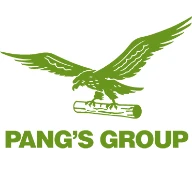Laminated Veneer Lumber (LVL) is a type of engineered wood product that is made by bonding thin layers of wood veneers together with adhesives. The development of LVL has evolved over time, and several trends have shaped its manufacturing and application. Here is an overview of the development process and trends of laminated veneer lumber:
Laminated veneer lumber has its roots in the development of plywood. Plywood involves the lamination of thin wood veneers, and the concept was extended to create a stronger and more versatile product, leading to the development of LVL.
Material Selection:
Veneers are typically made from fast-growing and readily available species of wood. The veneers are peeled from logs, dried, and then assembled into LVL.
Adhesive Bonding:
Adhesives play a crucial role in the manufacturing process. Phenol formaldehyde or melamine urea formaldehyde adhesives are commonly used. The adhesive bonding process ensures that the veneers are securely held together to form a strong and stable product.
Hot Pressing:
The assembly of veneers is subjected to heat and pressure in a hot press. This process activates the adhesives, causing them to cure and bond the veneers together. The specific parameters of temperature, pressure, and pressing time are carefully controlled to achieve the desired properties.
Sizing and Cutting:
Once the LVL panels are formed, they are typically sized and cut into various dimensions based on the intended applications.

Trends in the Development of Laminated Veneer Lumber:
Increased Production and Market Demand:
Over the years, there has been a growing demand for engineered wood products, including LVL, driven by factors such as sustainability, cost-effectiveness, and performance characteristics.
Advancements in Adhesive Technology:
Ongoing research and development in adhesive technology have led to the introduction of new and improved adhesives. These adhesives contribute to enhanced performance, durability, and environmental considerations.
Innovations in Manufacturing Processes:
Manufacturers have continually sought to improve efficiency in the production of LVL. Innovations in the manufacturing process, such as automation and advanced equipment, have contributed to higher precision and consistency in the final product.
Enhanced Performance Characteristics:
The development of LVL has focused on improving its structural and mechanical properties. This includes optimizing the arrangement of veneer layers, adjusting adhesive formulations, and exploring ways to increase load-carrying capacities.
Diversification of Applications:
Originally developed for structural applications in building construction, LVL has found applications in a diverse range of industries. This includes its use in furniture, packaging, and other engineered wood products.

Sustainability and Certification:
Sustainability is a significant trend in the wood products industry. Many manufacturers of LVL adhere to sustainable forestry practices and seek certification from organizations such as the Forest Stewardship Council (FSC) to demonstrate their commitment to responsible sourcing.
Global Market Expansion:
The market for LVL has expanded globally, with manufacturers and suppliers reaching a wider audience. This expansion is driven by globalization, increased awareness of engineered wood products, and the need for sustainable building materials.
Integration with Building Systems:
LVL is increasingly being integrated into modern building systems and construction techniques. It plays a crucial role in the development of engineered wood products that can be used in innovative and sustainable construction methods.
Research into New Materials:
Ongoing research focuses on exploring new materials and combinations that can further enhance the properties of LVL. This includes experimenting with different wood species, alternative fibers, and environmentally friendly adhesives.
Digitalization and Industry 4.0:
The adoption of digital technologies and Industry 4.0 principles in manufacturing processes is a trend that has the potential to improve efficiency, quality control, and customization in the production of LVL.
The development and trends in laminated veneer lumber reflect a continuous effort to meet the evolving needs of industries and consumers while considering environmental sustainability and performance requirements. As technology and market demands evolve, further innovations in LVL and other engineered wood products are likely to emerge.
Post time: Nov-22-2022




